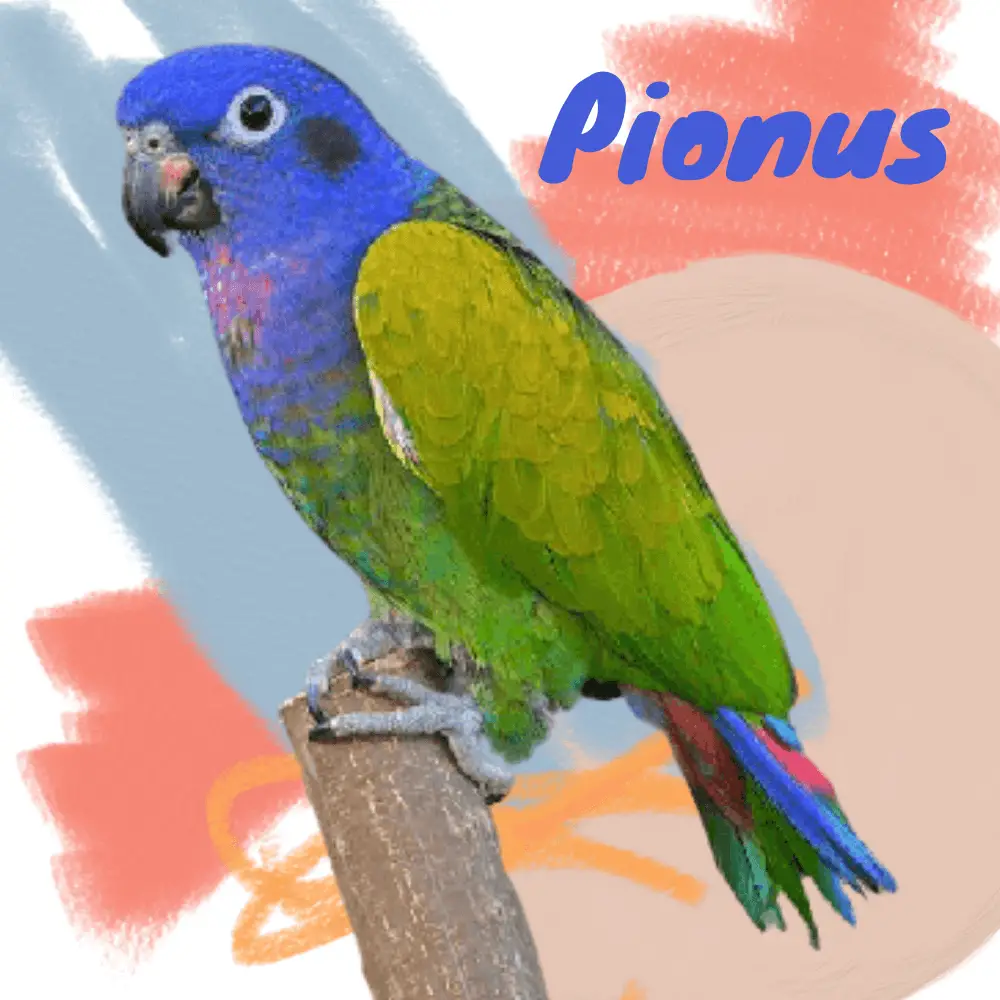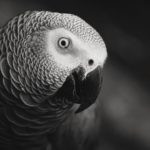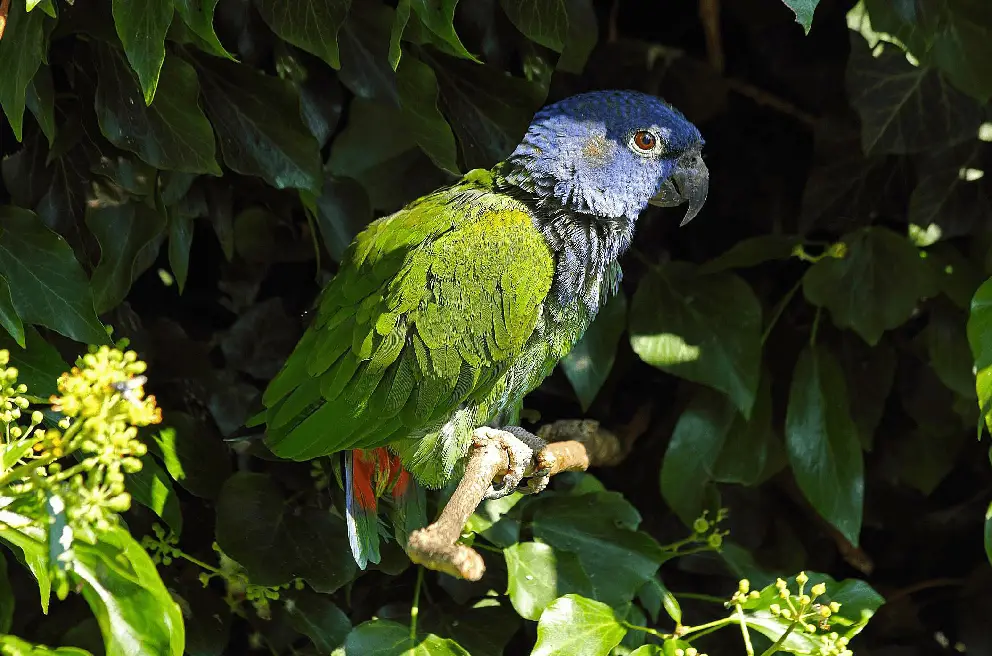
The parrots of the genus Pionus are medium-sized and somewhat similar to the Amazon parrot because of their stocky body and strong, equipped with a short tail spatula.
But they all typically have bright red under-tail (underside of the tail) feathers. This is the reason that led ornithologists to catalog them under the genus Pionus which includes eight species of medium size (24 to 31 cm) and not exhibiting sexual dimorphism. We can differentiate two groups: green species and dark species.
- Pionus menstruus – Blue-headed Pionus
- Pionus sordidus – Red-billed pionus
- Pionus maximiliani – Pione of Maximilian
- Pionus tumultuosus – Spangled pionus
- Pionus seniloides – Frosted piones
- Pionus senilis – White-crowned Pionus
- Pionus chalcopterus – Black pionus
- Pionus fuscus – Violet pionus
Origin and geographical distribution

menstruus → Brazil, Bolivia, Colombia, Guyana, Guyana, Suriname, Peru
sordidus → Venezuela, Colombia, Peru, Bolivia
maximiliani → Brazil, Bolivia, Paraguay, Argentina
tumultuosus → Peru
senilis → Panama, Mexico
chalcopterus → Venezuela, Colombia, Peru
fuscus → Venezuela, Guyana, Guyana, Suriname, Brazil
Blue-headed Parrot in France
In France, to raise this bird, the passion for this little colored and speechless bird must absolutely outweigh the financial interest.
It is for this reason that we find more Gabon Gray and Ara ararauna breeders than breeders. We are therefore going through these few pages, to try to make you discover this South American species neglected by French farms.
Description and biology
The seven species are all native to Central and South America. They frequent wooded areas and forests. They are usually quite dark in color and have large eyes surrounded by an eye-ring of bare or colored skin.
The specific behavior of these birds is the habit of making a hissing and panting noise when excited or frightened. It may sound confusing, but it is quite normal.
PIONUS PARROT goes to the PET EXPO!
SOURCE:PippyPets
breeding
Each couple will be housed in an aviary two to three meters long. The pions are robust, they can stay all year round in an outdoor aviary equipped with a good dry shelter, but not heated if the temperature allows it.
The current trend is to house them in individual cages. In this case, the eggs are removed to be placed in an incubator or the young are taken from the nest to be reared by hand, commonly known as “EAM”.
The term “EPP” denotes birds raised by their parents without human intervention. A large number of captive-born piones are currently hand-reared, resulting in familiar birds that are very close to humans.
These birds are less destructive and much less noisy than the Amazons, for example. Fresh branches are however necessary for their good balance and to occupy them.
The best way to raise is to do it naturally, by naturally we mean by respecting their natural habits and needs, with real nests, these reproduction cycles must be respected correctly and a correct couple pairing.
Learn tips for managing your parrot farming and ensuring that parrot are provided with all they need in terms of space, food, and environment.
Although very complex, artificial farming can and is practiced by several poultry farmers. This requires some experience and is equipped with the right equipment.
Blue-headed Parrot feeding
Pionus can’t eat everything humans eat, even if they seem to like it. Some foods are harmful to them. Discover a complete file on the diet of this parrot, with the recommended foods and those that must be absolutely avoided.

Blue-headed Parrot diseases
It is necessary to regularly monitor the state of health of your Blue-headed Parrot because some diseases can be fatal or very harmful for him. Discover our file on parrot diseases. We present the symptoms and possible treatments to you, we also present the equipment necessary to treat your pets.
SOURCE:PippyPets
Blue-headed Parrot
| Reign | Animalia |
|---|---|
| Branch | Chordata |
| Classroom | Aves |
| Order | Psittaciformes |
| Family | Psittacidae |
Everything about Pionus in English || Medium Parrots
SOURCE:RonitAholic




















